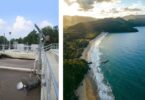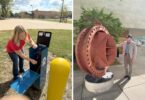Timo Kaarna, Water & Wastewater Segment Manager at ABB Low Voltage IEC motors, explains how motor technology can enhance the efficiency of water and wastewater industry operations.
As the world’s population continues to grow, water demand is surging, putting significant strain on the availability of usable water. People need clean water for drinking, cooking, and washing, while industrial facilities rely on it for cooling and various processes. Agriculture is a major consumer, with irrigation accounting for around 70 percent of the world’s freshwater, according to a UN report.
Moving and processing these vast volumes of both clean and wastewater requires significant amounts of energy. In fact, the International Energy Agency (IEA) estimates that as much as 4 percent of the world’s electrical energy is consumed by water and wastewater operations. And yet, according to UNESCO, $3.9B worth of economic losses can be attributed to water industry inefficiency each year.
This means that a substantial amount of the electricity consumed in the water and wastewater industries to power pumps, which are driven by electric motors, is ultimately wasted in day-to-day operations. Upgrading to more efficient motor technology presents a highly effective method for reducing power consumption in these sectors.
Wave of significance
Water treatment facilities employ energy-intensive processes that shift millions of cubic meters of water every day. Pumps account for more than half of the overall electricity consumption of wastewater plants, and more than three quarters in drinking water plants. Meanwhile, hydroelectric power production relies entirely on the movement of water. It generates roughly 15 percent of the world’s electricity, but for low-income countries it is especially important, supplying a little under half on average.
Relatedly, a World Bank Group report states that 70-80 percent of the global low-income workforce’s jobs depend on water, compared to the already significant 50 percent in high income countries. Inefficient energy use in water makes it less reliable and wears down infrastructure and components more quickly, limiting supply. Water plays a critical role in many economic activities — an unreliable water supply can hinder productivity and limit job demand in water dependent sectors such as agriculture, energy, manufacturing, and transportation.
Turning the tide
Water and wastewater plants can improve their energy efficiency by upgrading to more efficient, lower-emissions motors with variable speed drives (VSDs) for their pumps. The opportunities for energy savings are significant and deliver a rapid return on investment, with the money saved from lower energy bills quickly covering the cost of upgrades, often in a matter of months, depending on local energy costs.
The International Electrotechnical Commission (IEC) efficiency rating system categorizes motor efficiency, with each category increase reducing energy losses by 20 percent. The challenge is that many older water plant installations still use IE1 and IE2 motors. Yet today’s most efficient motors, like ABB’s Synchronous Reluctance (SynRM) motors can deliver the anticipated IE6 “Hyper-efficiency” level in a magnet-free design, reducing energy losses by more than 50 percent compared to equivalent IE3 induction motors, while requiring minimal maintenance and no rare earth metals to manufacture.
Pairing a motor with a VSD is an important way to enhance efficiency. A drive adjusts the motor’s speed and torque to match application needs, avoiding the waste of electricity inherent in motors running at full speed and requiring throttling downstream. Even small decreases in motor speed can cut energy use multiple times over, thanks to the non-linear relationship between the two variables. A particular advantage of SynRM technology is that it requires a drive to work, so the motor always comes as a package optimized for energy efficient operation.
Quick as a stream
Energy optimization using digital solutions is another way to reduce energy use. This can be implemented continuously, for example, by installing sensors on motors and pumps, or even by optimizing the whole system architecture of a water and wastewater plant.
ABB also produces drives specifically for water industry applications, such as the ACQ580, which offer additional useful capabilities. These features include sensorless flow calculation, multi-pump control, level control, soft pipe fill, dry run protection, quick ramps, and pump cleaning.
Keeping us afloat
Switching to more efficient and reliable motors paired with drives is the smart move in the water and wastewater sectors. These upgrades can help operators save money and protect the planet at the same time, increasing efficiency at every level while ensuring the longevity and continuity of supply. Water keeps our world afloat — the least we can do is invest in the performance and sustainability of the technologies that keep it flowing.







